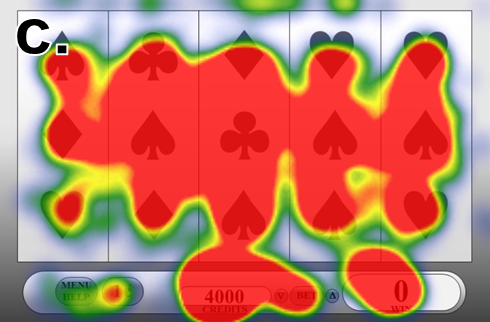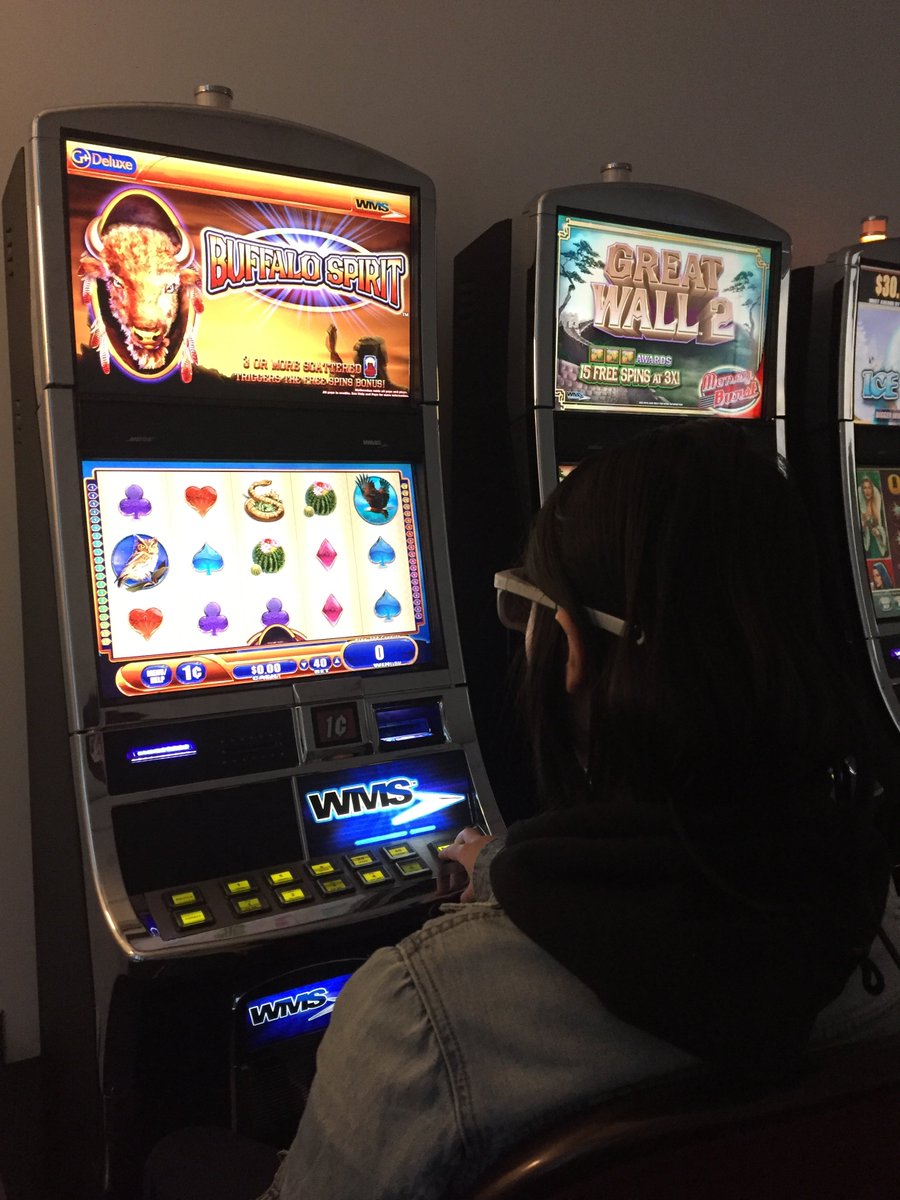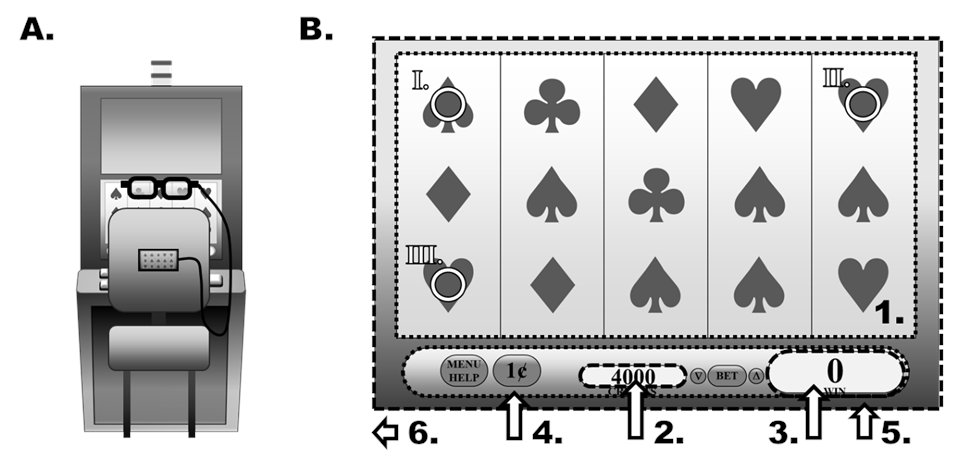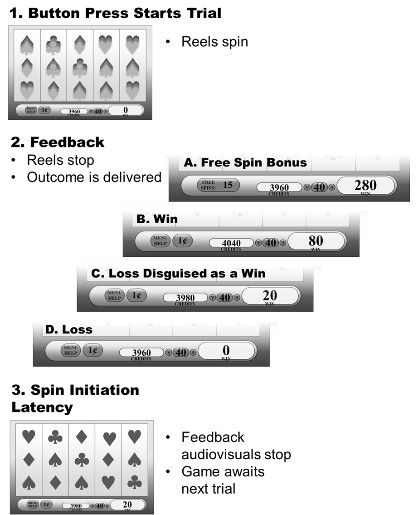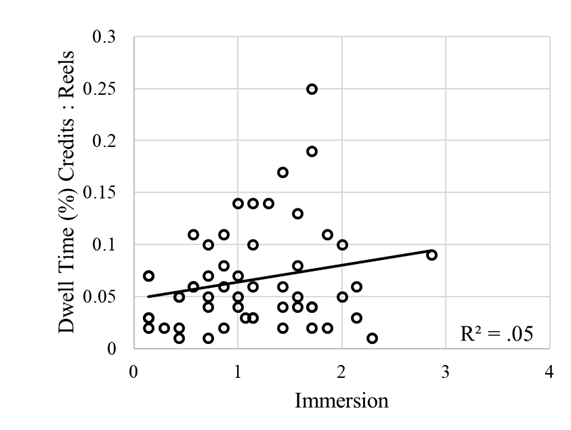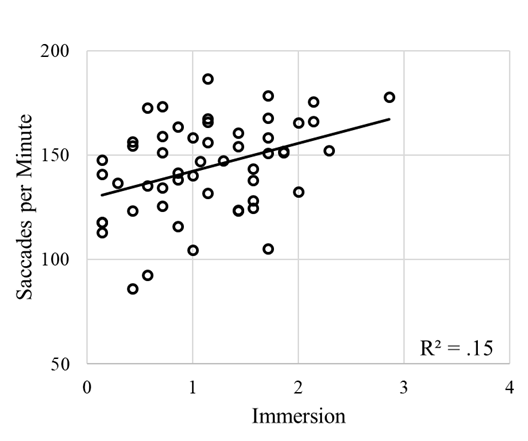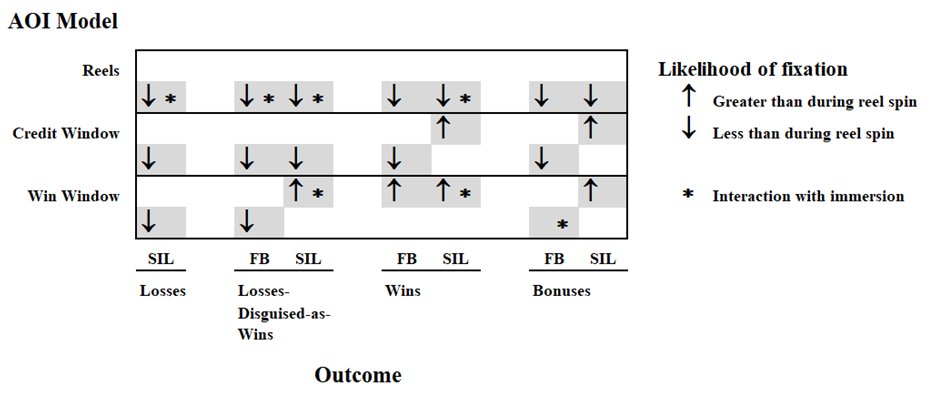When people think of being “in the zone,” they imagine a state of calm focus and high performance. For slot machine gamblers, the zone offers a chance to happily lose track of time. But it also carries a steep cost.
Our new @AddictionJrnl paper asks: What is this state?
1/15
Our new @AddictionJrnl paper asks: What is this state?
1/15
We know that the zone (AKA "immersion," "dissociation," "dark flow") is commonly reported among slot machine gamblers, and is robustly correlated with individuals& #39; risk of problem gambling.
2/15
2/15
But past research doesn’t agree on what happens to our attention system when we get into the zone.
1. Do we focus super hard on the game, and tune everything else out?
Or
2. Do we slip into a passive, trance-like state, becoming unconcerned with the outcome of play?
3/15
1. Do we focus super hard on the game, and tune everything else out?
Or
2. Do we slip into a passive, trance-like state, becoming unconcerned with the outcome of play?
3/15
We call the first possibility “Zoning IN”, and the second possibility “Zoning OUT”. To test these accounts, we asked experienced gamblers to play a real slot machine while wearing eye tracking glasses.
4/15
4/15
Processing the data, we divided the slot machine screen into several areas of interest, including:
1. The spinning reels
2. The credit window readout
3. The win window (like the credit window, but displays win size instead of remaining credit).
5/15
1. The spinning reels
2. The credit window readout
3. The win window (like the credit window, but displays win size instead of remaining credit).
5/15
We also captured a video recording of every session, and used image recognition to synchronize gamblers& #39; eye movements to events within the game.
Following the session, gamblers rated how & #39;in the zone& #39; they had felt on a 7-item immersion questionnaire.
6/15
Following the session, gamblers rated how & #39;in the zone& #39; they had felt on a 7-item immersion questionnaire.
6/15
Our primary analysis found that gamblers who reported higher immersion tended to spend more of the session looking at the game& #39;s credit window, and less of the session looking at the spinning reels. This is more consistent with "zoning in".
7/15
7/15
We also found that higher-immersion participants made more saccades overall. It seems like being in the zone was associated with moving one’s eyes around the game screen more often (consistent with “zoning in”).
8/15
8/15
Looking into the event-related data, we found that gamblers were more likely to look at the reels while the reels were spinning (seems logical  https://abs.twimg.com/emoji/v2/... draggable="false" alt="😉" title="Winking face" aria-label="Emoji: Winking face">).
https://abs.twimg.com/emoji/v2/... draggable="false" alt="😉" title="Winking face" aria-label="Emoji: Winking face">).
9/15
9/15
When the reels stopped spinning, the likelihood that gamblers’ looked at the credit window increased. Again, seems logical. But this was only true when some amount of credit was won.
10/15
10/15
When the outcome was a loss-disguised-as-a-win (i.e. you bet 40 credits, and only won back 15 credits), there was an increased likelihood that gamblers looked at the win window. This part of the screen might contribute to the common misperception of LDWs as true wins.
11/15
11/15
All in all, we found more evidence for the “zone in” model of slot machine immersion, suggesting that this state is marked by increasing attention to one’s ongoing success in slot machine gambling.
12/15
12/15
These results also suggest that, to reach zoned-in or at-risk gamblers, we should present responsible gambling content on-screen and over the reels, where we observed the most eye movements.
13/15
13/15
This project was a collaborative effort across departments at @UBC, @DMCBrainHealth @UBCPsych.
Authors: @SpencerMurch, @neuro_tweet, Mario Ferrari, Kent MacDonald, @ookenfooken, @Mashupicchu, @speringlab, and @LukeClark01.
14/15
Authors: @SpencerMurch, @neuro_tweet, Mario Ferrari, Kent MacDonald, @ookenfooken, @Mashupicchu, @speringlab, and @LukeClark01.
14/15
You can find our paper here: https://www.ncbi.nlm.nih.gov/pubmed/31746072
Pre-registration:">https://www.ncbi.nlm.nih.gov/pubmed/31... https://aspredicted.org/k4ty9.pdf
Open">https://aspredicted.org/k4ty9.pdf... data (CC-by-NC): https://dataverse.scholarsportal.info/dataset.xhtml?persistentId=doi:10.5683/SP2/GSOMLU
15/15">https://dataverse.scholarsportal.info/dataset.x...
Pre-registration:">https://www.ncbi.nlm.nih.gov/pubmed/31... https://aspredicted.org/k4ty9.pdf
Open">https://aspredicted.org/k4ty9.pdf... data (CC-by-NC): https://dataverse.scholarsportal.info/dataset.xhtml?persistentId=doi:10.5683/SP2/GSOMLU
15/15">https://dataverse.scholarsportal.info/dataset.x...

 Read on Twitter
Read on Twitter